How D D Mollick is preserving Sultan’s artistic legacy
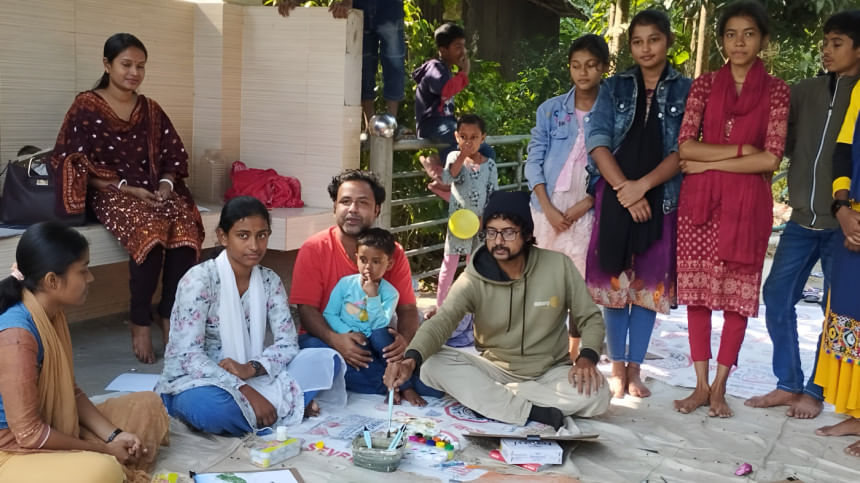
In Narail, a short distance from the S M Sultan Museum, sits Charukuthi Shilpalo, an art school that doesn't run on tuition fees, grants, or a polished curriculum. Instead, it runs on a conviction that children in the villages deserve the same artistic and creative exposure as those in the cities.
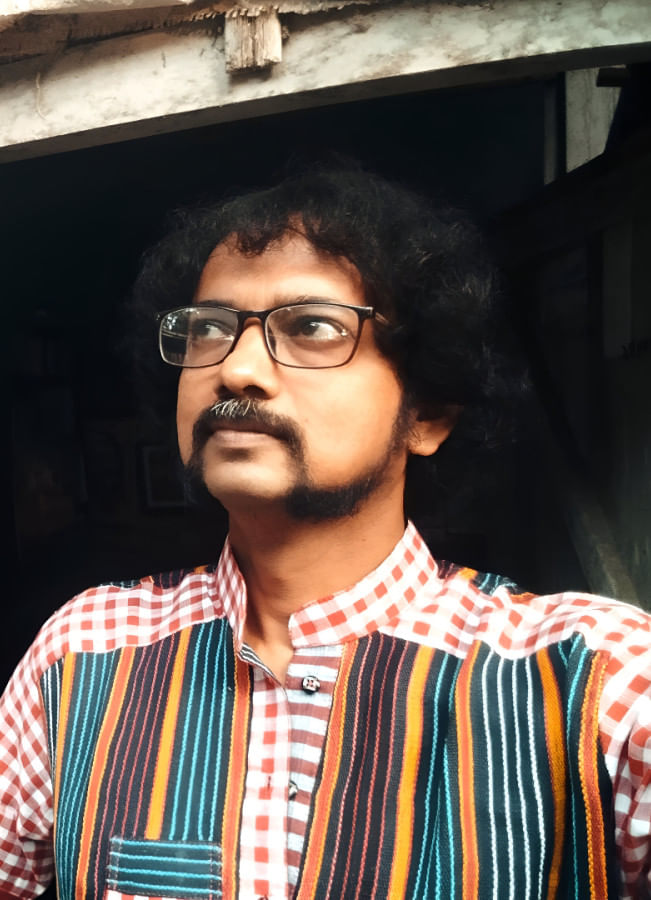
The man behind it, D D Mollick, has been here since he returned from Dhaka after more than two decades of study, exhibitions, and work. He had trained under S M Sultan, one of Bangladesh's most iconic painters, and shown his own work both at home and abroad. But instead of settling into the capital's art circuit, Mollick chose to come back to his birthplace and teach disadvantaged children, for free!
"I've kept this completely non-profit," he says. "No fees. The point is to make them learn, not to get them into some competition or show off numbers. I'd rather have fewer students who really want to learn."
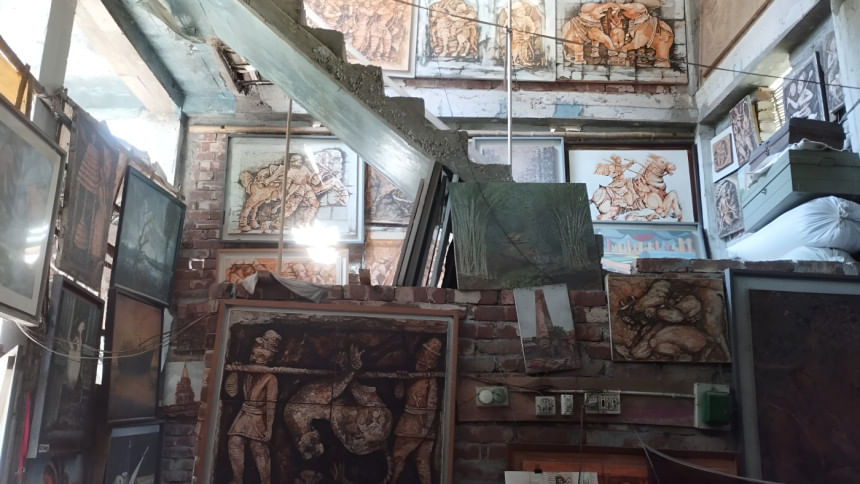
Drawing as protest
Mollick did not start drawing with the idea of becoming an artist. He says his earliest work came from anger, not against institutions, but against petty injustices in his village life.
"I grew up in a middle-class family, the eldest of my brothers. There was pressure from all sides. If something wrong happened, I couldn't fight it with a stick. I saw that if I drew something on the mud wall of our house, it would have an effect on people's minds," he recalls.
Once, when someone killed one of his pigeons, he drew a picture on the wall and wrote: 'Killing a living being is a great sin and leads to hell.' That was his way of getting his point across.
From there, his interest in figures led him on a search for better teachers. Local artists helped him improve — until one cousin told him about an "old man in Narail" he should meet. That man was none other than S M Sultan.
The first visit was unsuccessful; they were told to return the next day. The second trip, walking 14 kilometres, brought him face-to-face with Sultan, and thus began seven years of regular visits and learning.
"Sultan portrayed humans as the source of all power. Seeing those big canvases was like holding heaven in my hands," Mollick says.
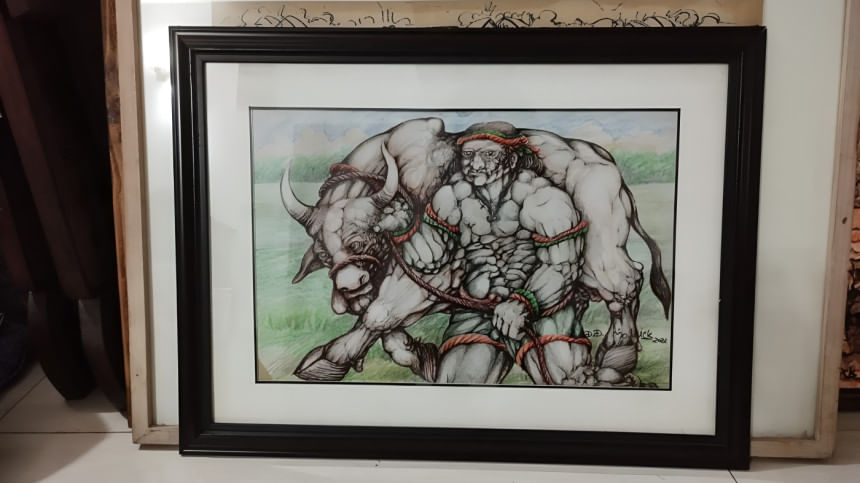
From student to seller
Art school came later. His father sold a piece of family land to fund his studies, first at Khulna Art College, then at Chittagong Art Institute and finally, an MFA in Dhaka. Like Sultan, he learned to make his own canvases, paints, and brushes, both for economic reasons and to maintain creative control.
"I never submitted my CV anywhere. I lived by selling my paintings," he says. Galleries in Dhaka and hotels like Sheraton and Sonargaon displayed his work, and many pieces went abroad.
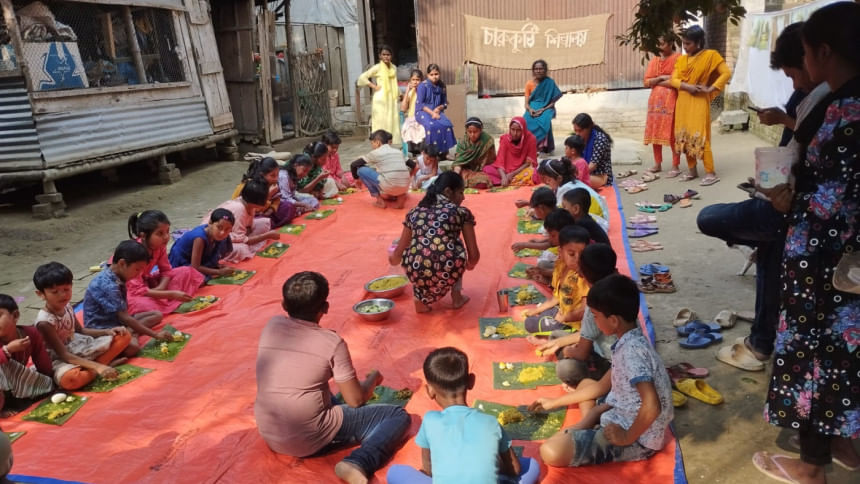
However, city life came with restrictions. He couldn't hang his paintings on the walls as he wished. Apartments changed; neighbours complained.
"There's no freedom in city life," he says. "And I saw that children in my village weren't getting opportunities. I thought — if Sultan could return home after conquering the world, why can't I?"

Returning empty-handed
When he came back to Narail, it wasn't with capital or a business plan. "I started with empty hands. No income source. Only my father's land," he says. That land still sustains him; he works the fields himself and produces crops organically.
The agricultural work is woven into his teaching. Students at Charukuthi Shilpalo don't just learn how to draw; they learn how to grow poison-free food, care for soil, and work in the sun.
"You have to eat healthy food to stay healthy. This is as important as learning to draw," Mollick says.
Classes are not tied to any government syllabus. Students begin with basic shapes, tonal work, and hand-eye coordination before moving into more complex ideas. He limits enrolment to around 50 — fewer than he could take — to focus on those genuinely interested.
He also teaches in other institutions, including a fishing village school and the S M Sultan Charu and Karukala Foundation, where he has full freedom over the curriculum.
"I'm not a magnet like Sultan; I can't make children walk 14 kilometres to my house. So, I go to them," he says.
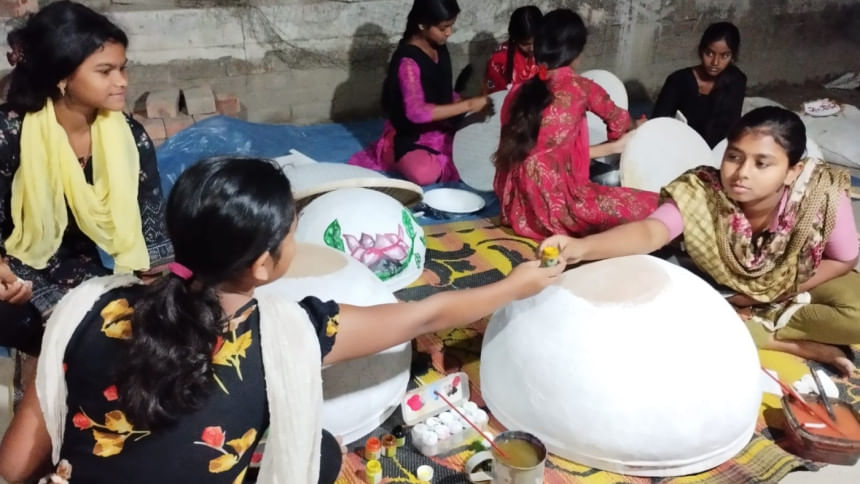
Building beyond art
The scope of Charukuthi Shilpalo has expanded. Two United Nations officials bought him a plot of land for farming native fish and cultivating fruits and vegetables. On Saturdays, children join "Come and Learn" sessions there, tending gardens, learning about biodiversity, and seeing how agriculture and art can share a philosophy — patience, observation, and respect for materials.
Mollick's plans stretch beyond teaching. He wants to preserve disappearing tools, crafts, and occupations in his region.
"In this village, children don't know what a plough or a yoke is," he says. "The Pal community's pottery work is vanishing. Weavers, fishermen, bamboo workers — I want to have a room for each of them here. The stories of this district can't survive if no one keeps them."
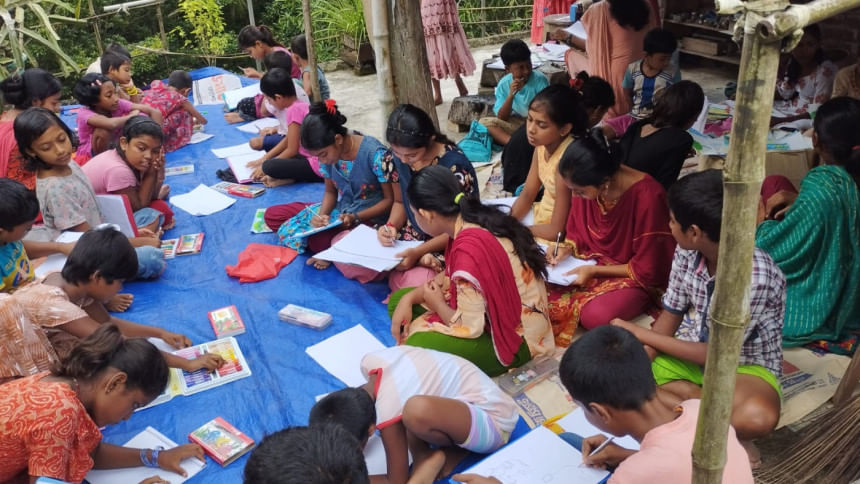
Legacy
His attachment to Sultan is direct and personal. He wrote his master's thesis on his guru, and later published a book.
Mollick's own work continues, largely commission-based paintings that help sustain his school. But he's realistic about recognition. "Artists don't usually get recognition in their lifetime. I've assumed I'll spend my whole life making the tail of a whale. Maybe someone else will make the head after I'm gone."
What keeps him going is not awards or exhibitions, but the sight of children learning, planting, and carrying knowledge forward. He measures success in the number of students who will teach their friends, rather than defeat them in a competition. "People like to see results in the form of trophies or certificates," he says. "But I look at whether someone has learned something they can pass on."
Photo: Courtesy

 For all latest news, follow The Daily Star's Google News channel.
For all latest news, follow The Daily Star's Google News channel. 








Comments